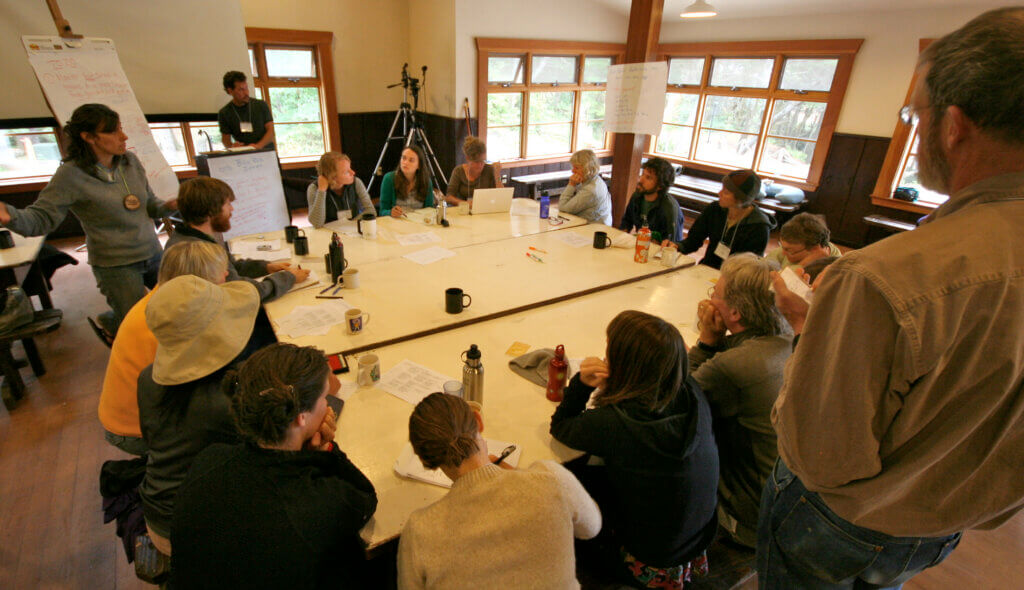Why organizations fear connecting
Seth Godin points out that many organizations fear connecting because their leadership fears losing control. Even though the control they think they have is a myth.
“Organizations are afraid of connecting. They are afraid of losing control, of handing over power, of walking into a territory where they don’t always get to decide what’s going to happen next. When your customers like each other more than they like you, things can become challenging.
Of course, connecting is where the real emotions and change and impact happen.”
—Seth Godin, ‘Connect to’ vs. ‘Connect’
The importance of connection
A survey I conducted of attendees while writing Conferences That Work confirmed (as do many other meeting surveys) that the two most important reasons people go to meetings are to connect (80%) and learn (75%).
Nevertheless, many conferences are structured like this.
No one’s connecting here, except, maybe, a single speaker to his audience. The audience members aren’t connecting with each other at all.
To create connection, conferences need to be structured like this.
Here, we see people gathered together, talking, listening, and taking notes. Active learning, rather than passive reception of lecturing, is the model. Active learning is a better model for meetings because it builds connection around meaningful learning.
An organization that fears connecting:
- Employs hierarchical meetings and events, controlling what happens by using a predetermined agenda of broadcast-style lecture sessions.
- Creates a fundamental disconnect between the wants and needs of the staff and/or members and the structure of its meetings and conferences. Events that provide connection-rich sessions, allowing participants to discover their tribe and determine what they discuss, are anathema.
“Connect to” is a goal; “connect” is a verb
Seth again:
“An organization might seek to ‘connect to’ its customers or constituents…That’s different, though, than ‘connect'”
Some organizations try to obscure their control-based culture by asserting their goal is to “connect to/with” their clients. There’s plenty of plausible-seeming advice available along these lines; e.g., “How to Connect With Customers” or “5 Ways to Connect With Your Client“.
However, this goal attempts to disguise a desire for control. The leadership wants to control how the organization will “connect with” customers. Such a goal is a one-way street. It ignores the reality that, for healthy relationships, connection is a two-way process.
In contrast, a functional organization makes it easy for customers to connect about their wants and needs.
Connection is no longer a goal (noun). A functional organization connects (verb). In the same way that change is a verb, not a noun.
Creating exceptional connection—and organizations
Exceptional organizations take connection to an even higher level. They facilitate connection between their constituency members, supporting the creation of tribes.
Seth, once more:
“When you connect your customers or your audience or your students, you’re the matchmaker, building horizontal relationships, person to person. This is what makes a tribe.”
Tribes—self-organizing groups bound by a common passion—are the most powerful spontaneous human groups. Tribe members pour energy into connecting around their purpose, which leads to meaningful, powerful action. Having them associated with and supported by your organization reaps substantial rewards for everyone involved.
Seek out and create organizations that don’t fear connecting.
You’ll make your world and the world a better place.




